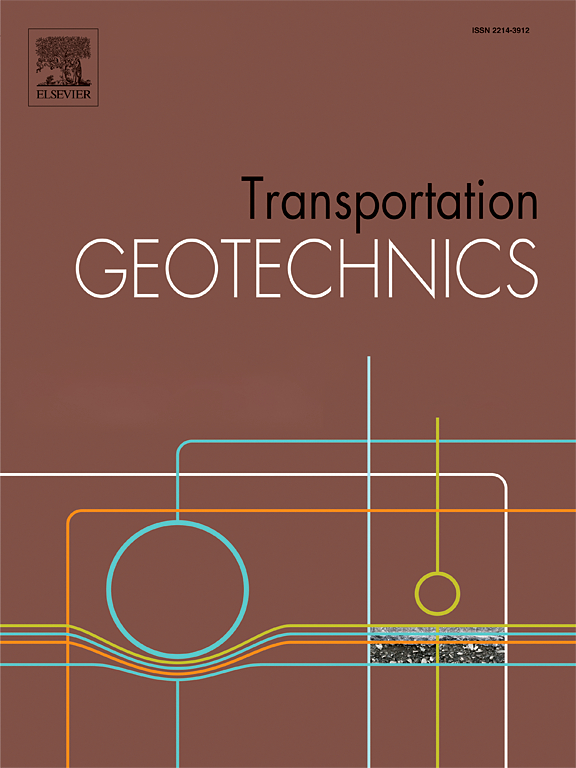Investigating the particle migration and dynamic characteristics in ballasted track subgrade under intermittent load-wetting coupling
IF 4.9
2区 工程技术
Q1 ENGINEERING, CIVIL
引用次数: 0
Abstract
Existing ballasted track subgrades are prone to complex particle migration problems due to intermittent train load-rainfall wetting coupling, which causes mud pumping in severe cases. In this work, a model test on a ballast layer overlying a fine particle layer was conducted under intermittent load-wetting coupling conditions. The experimental results indicate that the coupling effect of intermittent loading and wetting has a significant effect on the increase in the volumetric water content and pore water pressure. The changes in the accumulated deformation, resilient modulus, damping ratio, and particle migration phenomenon mainly occur in the first three loading stages (LS1–LS3 stages), and the changes are most significant in the second loading stage (LS2 stage) because of the high saturation and low density of the soils. During the subsequent loading stages, the changes in the accumulated deformation, resilient modulus, damping ratio, and particle migration phenomenon are not obvious because of the high density of the soils. A low level of resilience occurs during intermittent periods (IS4–IS7). At the end of the test, the ballast fouling index (FI) was 16.4%, reaching a moderate fouling level. Timely replacement and rectification should be conducted for sections that produce mud pumping and ballast fouling.
求助全文
约1分钟内获得全文
求助全文
来源期刊

Transportation Geotechnics
Social Sciences-Transportation
CiteScore
8.10
自引率
11.30%
发文量
194
审稿时长
51 days
期刊介绍:
Transportation Geotechnics is a journal dedicated to publishing high-quality, theoretical, and applied papers that cover all facets of geotechnics for transportation infrastructure such as roads, highways, railways, underground railways, airfields, and waterways. The journal places a special emphasis on case studies that present original work relevant to the sustainable construction of transportation infrastructure. The scope of topics it addresses includes the geotechnical properties of geomaterials for sustainable and rational design and construction, the behavior of compacted and stabilized geomaterials, the use of geosynthetics and reinforcement in constructed layers and interlayers, ground improvement and slope stability for transportation infrastructures, compaction technology and management, maintenance technology, the impact of climate, embankments for highways and high-speed trains, transition zones, dredging, underwater geotechnics for infrastructure purposes, and the modeling of multi-layered structures and supporting ground under dynamic and repeated loads.
 求助内容:
求助内容: 应助结果提醒方式:
应助结果提醒方式:


